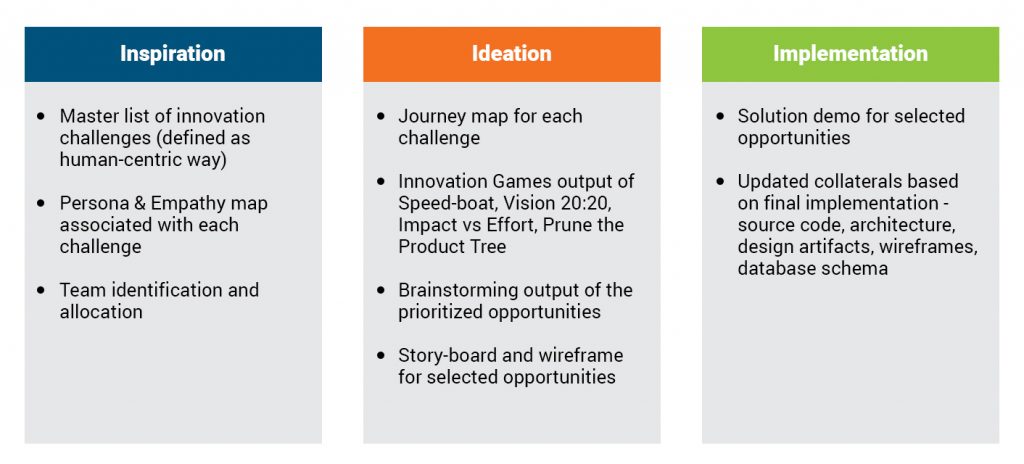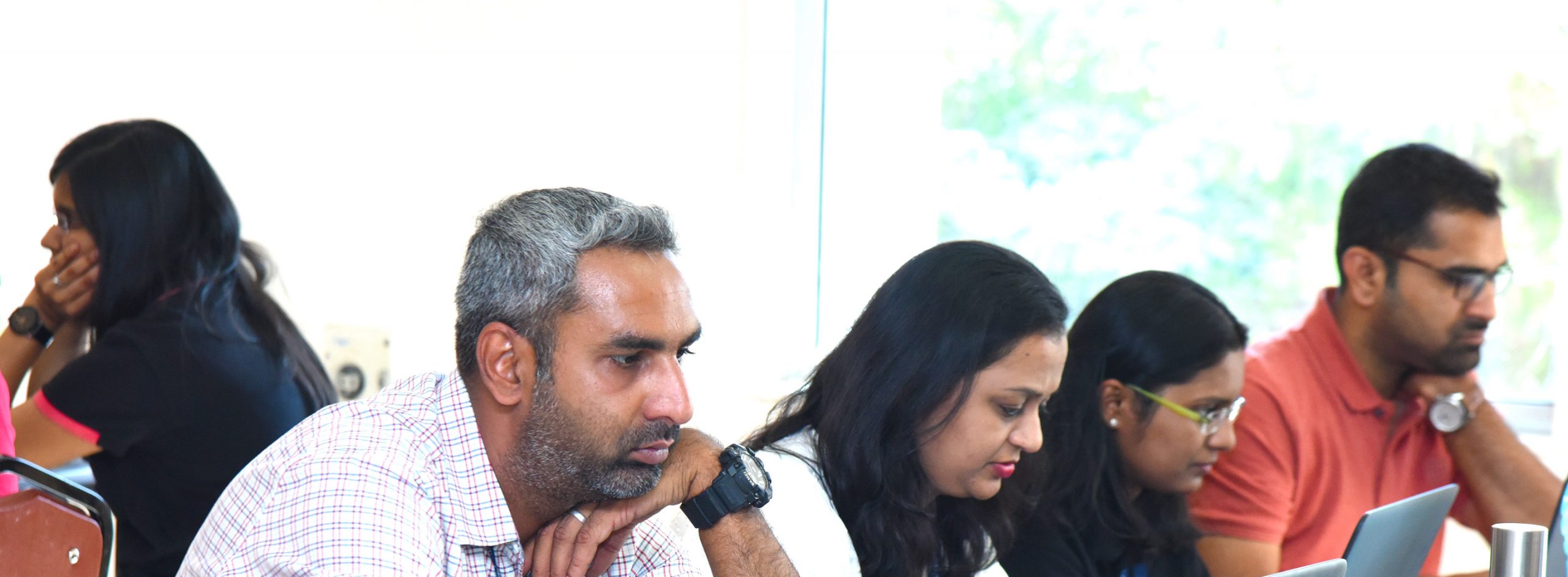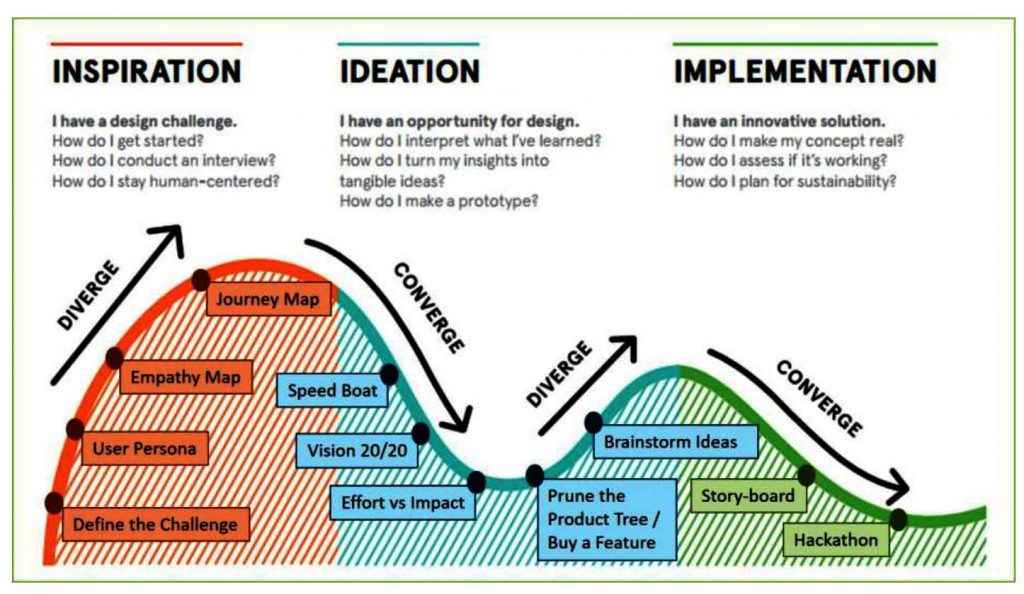We’ve arrived at Industry 4.0 in a relatively short time, but the real world is always focussed on the next big innovation. Jumping from 1.0 to 4.0 without battling an eyelid only confirms that things hereafter will change at an even more rapid pace. From Artificial Intelligence successfully diagnosing disease in record time to Machine Learning processing paperwork faster and with more accuracy than ever before, the race is most definitely ON! We also know that being the one who comes up with breakthrough innovations consistently is no small feat. But is there a method to the madness that is rapid tech upheaval?
There is!
Let’s Hack Innovation
Persistent Systems has distilled innovation down to a science. It involves definite steps, patterns, innovation games and design thinking inspired journeys. We are talking about leveraging hackathons. And I’ve introduced these earlier in the year. There is nothing like the pressure of time running out to bring out ideas that have the potential to change worlds.
Persistent System’s experience with numerous hackathons over the years has shaped our outlook and methodology of the ‘hackathon-as-a-service’ offering. Here’s a quick list of the variety of hackathons we have been a part of just in the last year
- Those conducted or organized in-house like Semicolons
- Some in partnership with names like Mount Sinai and Stanford Health
- Others as social initiatives like the Drishti App
- And some conducted with the purpose of encouraging innovation in India like Smart India Hackathon
Hackathons 101
The journey to breakthrough innovations can be neatly divided into 3 phases, inspiration, ideation and implementation.
Inspiration
What most view as problems, we view as opportunities and inspiration. In this phase, workshops conducted help bring up and bring to resolution the following challenges, processes and questions,
- Identify the broad / specific challenges (horizontal / vertical) based on market insights
- Invite teams (self-organizing and cross-functional)
- Conduct ‘inspiration workshop’ as per ‘design thinking’
- Re-frame challenges as human-centric and define ‘persona’
- Inspiration could come from “irritants”, “improvements” and “innovation”
Ideation
This is where intangible concepts that show massive promise are converted into tangible ideas. Here’s a checklist of all we accomplish in the ideation stage,
- Identify and prioritize opportunities for solution design
- Conduct brainstorming sessions to identify solutions
- Leverage innovation games to prioritize solutions
- Create story-board and wire-frames for prioritized solutions
Implementation
Let’s build! Once there is a clear strategy and blueprint in place, the coding begins. This is the stage that tests how thoroughly the first 2 steps were executed. The implementation consists of the following stages,
- Conduct a training session on ‘Vega’ or appropriate ‘rapid prototype platform’
- Run a ‘Code Hackathon’ for 24 – 36 hours
- Create a solution demo for the prioritized opportunities
- Organize a Solution Demo walk-through and review
What Hackathons can deliver
Each of the 3 stages that comprise of the ‘Hackathon’ strategy has very specific outcomes associated with it. Without these end results, moving on to the next stage is unproductive and running into a roadblock later will become unavoidable.
Here are the key deliverables that are a must at the end of each of the 3 stages of the Hackathon.

The Key Deliverable
The intense time-bound Hackathon has a reputation of bringing out the best in people. There’s something about an impending deadline that speeds up the creative process in the human mind!
The ‘Experience Prototype’ is the key output that a hackathon provides. This is the result of intensive problem-solving sessions coupled with turning ideas into tangible prototypes that demonstrate product vision.
The success of this deliverable and every subsequent version is measured on very specific parameters. The 3 parameters that must be considered while gauging how effective the hackathon has been are impact, innovation and technical achievement.
In terms of impact, it must be seen whether the application has any real business impact and if it has been able to disrupt the way a user perceives the business. Bottom line? It should solve the stated goal that was agreed upon in the beginning of the hackathon journey.
Moving on to innovation. Innovative solutions feature high on the list of priorities, hackathons are all about thinking out of the box. Participants are encouraged to come up with novel ideas that are creative and even those that have never been attempted before.
Every hackathon is designed to push teams to solve complex technical problems and get a working demo completed within the allotted time. Leveling up the skills of the team along with providing viable solutions is the basic ethos that hackathons are run on.
Persistent Systems, along with IBM, have executed several coding projects while focussing on creating a better world using the best that tech has to offer. Read all about it here.
Hackathons for the win!
The theory that the best ideas come out during crunch time is valid, but the true secret sauce that makes hackathons work is Persistent System’s focus on being human-centric. Keeping in mind everything right from developing user personas and empathy maps to understanding customer priorities, while solving issues with innovation game frameworks like ‘Prune the Product Tree’, ‘Buy a feature’ and more.
To finish off, here’s a video that details what Team Persistent was able to achieve for one of the biggest financial institutions in the US. This is the power of a hackathon methodology! Want to see how a hackathon approach can eliminate your most pressing pain points? Talk to us now.
Find more content about
Innovation (8) digital transformation (49) Software 4.0 (11) hackathon-as-a-service (1)







